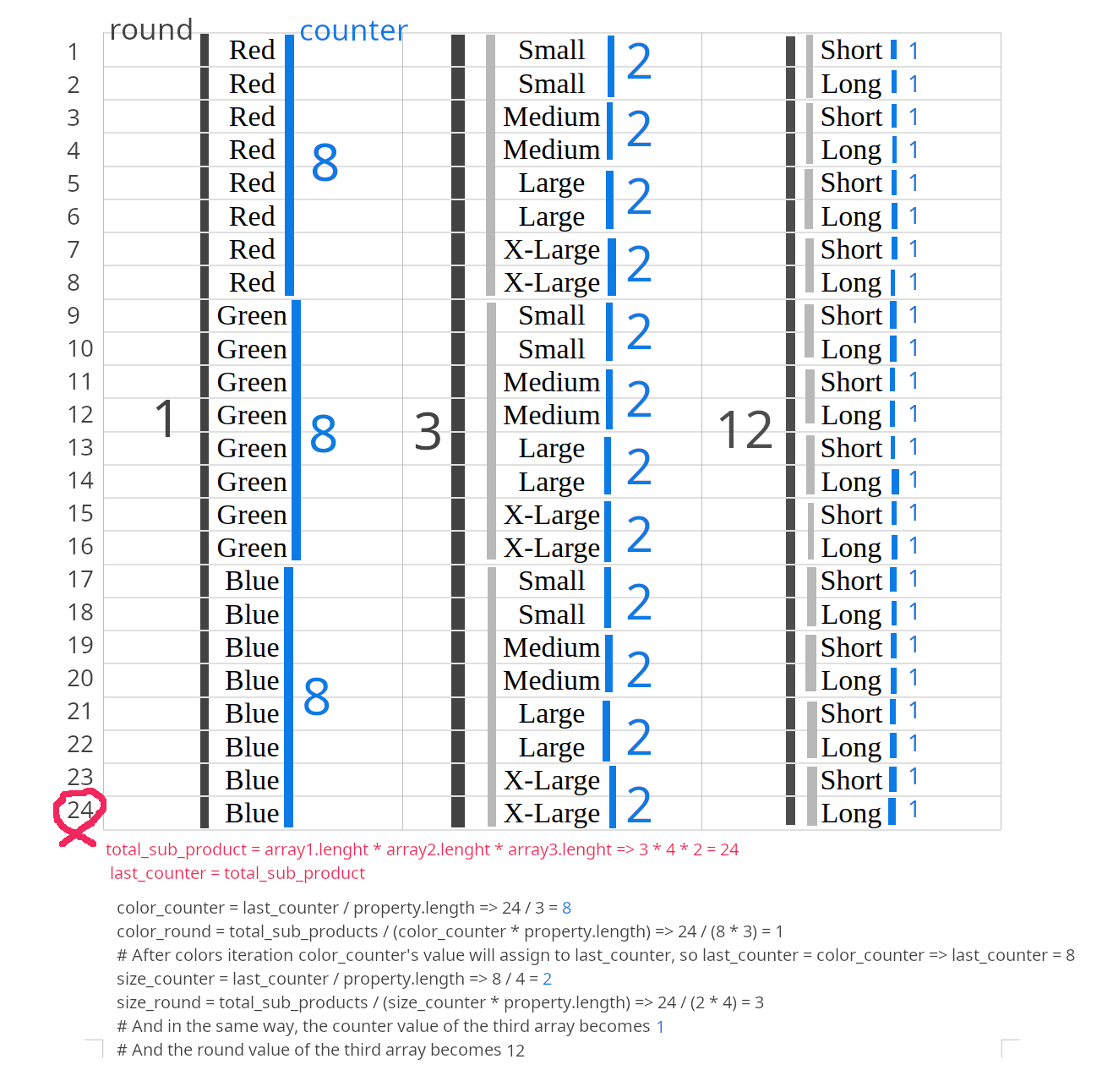First, clone the project with the following command:
git clone https://github.com/hasssanitman/sub-product-generator.gitThen enter the project directory. and enter the following command:
python main.pyImagine that you have an unspecified number of arrays in set (A), each of which has an unspecified number of items. And you want to have a new collection (B) of arrays that are a combination of the items of the arrays of collection (A).
There are 2 rules here:
- Each of the resulting arrays must be unique.
- The difference in the order of the items of two similar arrays cannot make them unique.
In one of the projects called Carbon (an online store builder), we mostly focused on clothing stores. A product might have different features, based on the price, the number of stock in stock, and different discounts.
For example, a blouse may have different features, each of which has its own conditions for sale.
| Model | Features(color,size,sleeve) | Price | In-Stock |
|---|---|---|---|
| Blouse-Model X | Red - Small - Long | 50$ | 10 |
| Blouse-Model X | Red - Small - Short | 49$ | Out of Stock |
| Blouse-Model X | Green - Large - Short | 55$ | 20 |
| Blouse-Model X | Red - X-large - Long | 69$ | 8 |
If the number of arrays of set A and their items are always known, it will be much easier to solve the problem. But here we are talking about a situation where we do not know how much data the user enters each time!
It is possible that a certain model t-shirt has only two characteristics, color, and size, and it is also monochromatic!
If the store manager tries to manually enter a large number of values every time, there will definitely be a mistake in entering the information. And it may have very bad consequences.
I coded in JavaScript in the Carbon project, but here I rewrote it in Python. You have a set as follows:
The first array is the color, the second array is the size, and the third array is the sleeve type.
with the following format:
[
{
property: 'Color',
values: ['Red', 'Green', 'Blue']
},
{
property: 'Size',
values: ['Small', 'Medium', 'Large', 'X-large']
},
{
property: 'Sleeve',
values: ['Short-Sleeve', 'Long-Sleeve']
},
]
And you expect to get a result similar to the array below:
{
['Red', 'Small', 'Short-Sleeve'],
['Red', 'Small', 'Long-Sleeve'],
['Red', 'Medium', 'Short-Sleeve'],
['Red', 'Medium', 'Long-Sleeve'],
['Red', 'Large', 'Short-Sleeve'],
['Red', 'Large', 'Long-Sleeve'],
['Red', 'X-large', 'Short-Sleeve'],
['Red', 'X-large', 'Long-Sleeve'],
['Green', 'Small', 'Short-Sleeve'],
['Green', 'Small', 'Long-Sleeve'],
['Green', 'Medium', 'Short-Sleeve'],
['Green', 'Medium', 'Long-Sleeve'],
['Green', 'Large', 'Short-Sleeve'],
['Green', 'Large', 'Long-Sleeve'],
['Green', 'X-large', 'Short-Sleeve'],
['Green', 'X-large', 'Long-Sleeve'],
['Blue', 'Small', 'Short-Sleeve'],
['Blue', 'Small', 'Long-Sleeve'],
['Blue', 'Medium', 'Short-Sleeve'],
['Blue', 'Medium', 'Long-Sleeve'],
['Blue', 'Large', 'Short-Sleeve'],
['Blue', 'Large', 'Long-Sleeve'],
['Blue', 'X-large', 'Short-Sleeve'],
['Blue', 'X-large', 'Long-Sleeve'],
}
I found a solution to this problem, and I was able to implement it in two ways. Column and Row
Column implementation is really a disaster! But Row has a much better algorithm.
Here I put the main solution. Then you can read the codes of both methods. Pay attention to the image below:
As you can see, the most important point of this algorithm is the correct calculation of counter and round values.
We have a variable called last_counter whose initial value is equal to the value of the total_sub_products.
But after the execution of the first loop, its value is equal to the counter value of the previous array!
And based on this value, the round value is calculated correctly.

